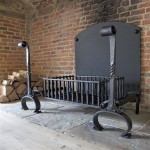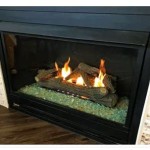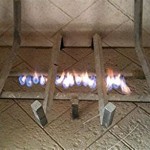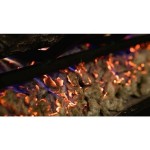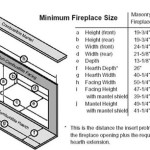Most Efficient Fireplace Insert Wood Burning: A Comprehensive Guide
Fireplace inserts represent a significant improvement over traditional open fireplaces in terms of heating efficiency and environmental impact. While open fireplaces lose a substantial amount of heat up the chimney, fireplace inserts are designed to capture and radiate heat into the room. Understanding the factors that contribute to the efficiency of a wood-burning fireplace insert is crucial for homeowners seeking to maximize heat output and minimize wood consumption.
Efficiency in a wood-burning fireplace insert refers to its ability to convert the potential energy stored in wood into usable heat within a living space. This efficiency is typically measured as a percentage, indicating the proportion of the wood's energy that is effectively transferred to the room rather than being lost through the chimney. Several factors influence this efficiency, including the design of the insert, the quality of the wood used, proper installation practices, and operational techniques.
The allure of a wood-burning fireplace insert lies in its blend of aesthetics and practicality. It offers the visual appeal and comforting ambiance of a traditional fireplace while providing a more effective and sustainable heating solution. By carefully considering the key elements of efficient design, wood selection, and operating practices, homeowners can significantly improve the performance of their fireplace insert and enjoy a more comfortable and cost-effective heating experience.
Key Point 1: Understanding Fireplace Insert Efficiency Ratings and Standards
To evaluate the efficiency of different fireplace insert models, it's essential to understand the ratings and standards used to assess their performance. The Environmental Protection Agency (EPA) plays a crucial role in regulating wood-burning appliances in the United States, setting emission standards and promoting the development of cleaner and more efficient technologies. EPA-certified wood-burning inserts have undergone rigorous testing to demonstrate compliance with these standards.
When considering a fireplace insert, the EPA certification is a primary indicator of its environmental performance and efficiency. An EPA-certified insert will have lower particulate matter emissions than older, non-certified models. Lower emissions usually correlate with higher efficiency as more of the wood is being burned completely and converting to heat rather than being released as smoke. The EPA website provides a directory of certified wood stoves and fireplace inserts, offering valuable information about their emissions and heating efficiency.
Beyond EPA certification, the Higher Heating Value (HHV) and Lower Heating Value (LHV) are important concepts in understanding fuel efficiency. HHV refers to the total heat released during combustion, including the heat required to vaporize any water present in the fuel. LHV, on the other hand, excludes the heat of vaporization. In the context of wood-burning inserts, LHV is generally a more accurate representation of the usable heat produced, as the moisture content in wood can significantly impact its energy output.
The stated efficiency rating of a fireplace insert should be carefully considered, but it's also important to understand the conditions under which that rating was achieved. Laboratory testing often takes place under ideal conditions that may not accurately reflect real-world use. Factors such as the type of wood used, the draft in the chimney, and the homeowner's operating practices can significantly affect the actual efficiency of the insert. Therefore, it is important to read reviews and consult with experienced installers to get a more realistic assessment of the insert's performance.
Key Point 2: Design Features and Technologies that Enhance Efficiency
Several design features and technologies contribute to the overall efficiency of a wood-burning fireplace insert. These features are often incorporated to improve combustion, reduce heat loss, and maximize heat transfer to the room. Examining these design elements is crucial for selecting an insert that provides optimal heating performance.
One crucial aspect is the combustion chamber design. Well-designed combustion chambers promote complete combustion by ensuring an adequate supply of air and maintaining high temperatures. Features like secondary air injection systems introduce preheated air into the upper part of the firebox, burning off unburned gases and reducing smoke emissions. This secondary combustion process not only reduces pollution but also extracts additional heat from the wood, improving overall efficiency.
Another important feature is the use of refractory materials, such as firebrick or ceramic fiber blankets, to line the combustion chamber. These materials help to insulate the firebox, maintaining high temperatures and promoting more complete combustion. They also help to radiate heat into the room, enhancing the insert's heating capabilities. Thicker refractory linings generally provide better insulation and lead to higher efficiency.
Baffles, strategically placed within the combustion chamber, play a role in slowing down the flow of hot gases, allowing more time for heat transfer to the room. By redirecting the gases, baffles also encourage more complete combustion of any remaining particles, further reducing emissions and improving efficiency. The materials of the baffles also impact performance, with refractory materials providing better heat retention than metal baffles.
The door design of the fireplace insert also contributes to its efficiency. A tightly sealed door prevents air leakage, ensuring that the fire receives only the intended amount of oxygen and minimizing heat loss through the front of the insert. Gaskets around the door create a tight seal, and adjustable door latches allow for proper closure and maintenance of the seal over time. The glass in the door should be high-temperature resistant and should be kept clean for optimal radiant heat transfer.
Finally, the heat exchange system is crucial. Some inserts use a convection system, which involves a fan that circulates air around the firebox to distribute heat more evenly throughout the room. Others rely solely on radiant heat, which warms objects directly in its path. Convection systems generally provide more rapid and uniform heating, while radiant heat offers a more localized and concentrated heat source.
Key Point 3: Best Practices for Wood Selection and Operation
Even the most efficient fireplace insert will perform poorly if used with the wrong type of wood or operated improperly. Selecting the right wood and following best practices for lighting, maintaining, and monitoring the fire are crucial for maximizing efficiency and minimizing environmental impact.
The type of wood used has a significant impact on the amount of heat produced. Hardwoods, such as oak, maple, and ash, are denser and contain more energy per unit volume than softwoods like pine and fir. Using hardwoods will result in longer burn times and more consistent heat output. Softwoods, while easier to ignite, burn more quickly and produce more smoke.
The moisture content of the wood is another critical factor. Wood that is too wet will burn inefficiently, producing excessive smoke and creosote buildup in the chimney. Ideally, wood should be seasoned for at least six months to a year, allowing it to dry to a moisture content of 20% or less. Using a moisture meter to check the moisture content of the wood before burning is recommended.
Proper fire-starting techniques are also essential for efficiency. A top-down fire-starting method, where kindling is placed on top of larger pieces of wood, can promote cleaner and more efficient combustion. This method allows the fire to burn down slowly, preheating the wood below and reducing the amount of smoke produced. Avoid using excessive amounts of paper or flammable liquids to start the fire, as these can contribute to air pollution.
Maintaining a hot and consistent fire is key to efficient operation. Add wood regularly to keep the fire burning brightly, and avoid letting the fire smolder. Smoldering fires produce more smoke and creosote, reducing efficiency and increasing the risk of chimney fires. Adjust the air intake controls to maintain a steady flame without creating excessive smoke. Observe the smoke coming from the chimney; a clear or light gray plume indicates efficient combustion, while dark or black smoke suggests incomplete combustion.
Regular maintenance of the fireplace insert and chimney is also important. Clean the chimney annually to remove creosote buildup, which can pose a fire hazard. Inspect the door seals and gaskets to ensure they are in good condition. Clean the glass on the door regularly to maintain visibility and radiant heat transfer. Following these best practices will help to ensure that the fireplace insert operates safely and efficiently for years to come.

The Best Wood Burning Fireplace Inserts Or Stoves Ecohome

Why A Wood Burning Fireplace Insert Bethesda Md Service

Comparing Fireplace Inserts What S Best For You Forge Flame

Regency Hampton Hi500 Wood Insert Fireplace S Hearth Home

Fireplace Inserts 5 Money Saving Benefits Efficient Heating

Wood Burning Fireplace Inserts Insert Installation

Quadra Fire Expedition Ii Wood Insert Best

The Best Wood Burning Fireplace Inserts Or Stoves Ecohome

Best Fireplace Inserts In 2024

What Will Make Your Fireplace Energy Efficient Rockford Chimney


